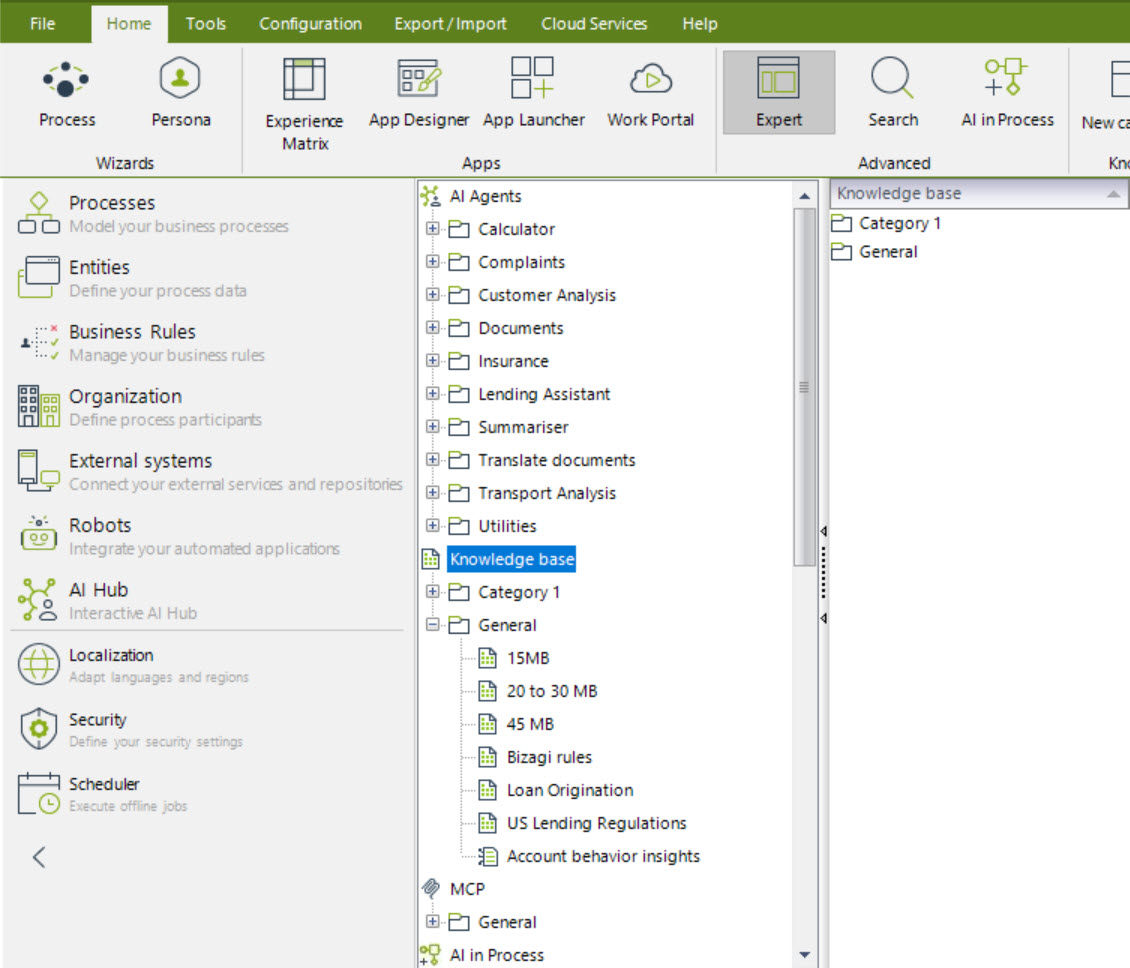What is Enterprise Knowledge?
Enterprise Knowledge is a centralized framework that allows you to structure, store, and manage organizational knowledge in a reusable and efficient way. This knowledge can be leveraged by AI Agents and AI Workers to enhance automated decision-making, support complex process execution, and improve the accuracy of AI-powered responses in Bizagi.
How Enterprise Knowledge works
Enterprise Knowledge organizes information through Knowledge Base Catalogs, which define collections of knowledge that Bizagi's AI components can reference during execution. Each Catalog includes one or more information sources that are processed, indexed, and made available through Retrieval-Augmented Generation (RAG).
You can build Catalogs in two different ways, depending on the type of information you want to include:
•Bizagi Files Knowledge uses content extracted from documents. It can be used by AI Agents, AI Workers and Ask Ada.
•Bizagi Data Knowledge uses information stored in Bizagi entities. It is available exclusively for AI Agents.
Each option determines the structure and availability of the knowledge that Bizagi's AI components can access.
Structure and access
To access Enterprise Knowledge, log in to Bizagi Studio, open the Expert view, navigate to the AI Hub module, and select the Knowledge base section.

Within this section, knowledge is organized hierarchically. The top level consists of Categories, which group related knowledge areas. Each Category contains one or more Catalogs, and each Catalog represents a specific knowledge base built using either Bizagi Files Knowledge or Bizagi Data Knowledge. A distinctive icon identifies the type of knowledge used to create each Catalog.
Once configured, Catalogs are processed and indexed, making their content available to AI Agents and AI Workers during execution.
Next steps
After understanding the concept and structure of Enterprise Knowledge, you can proceed to configure and manage its components. Start by defining Categories to organize related knowledge areas, and then create Catalogs within each category to store and process specific sources of information.
You can build Catalogs using either Bizagi Files Knowledge or Bizagi Data Knowledge, depending on whether the knowledge comes from documents or from data stored in Bizagi entities. Once your Catalogs are created, you can manage their details and associate them with the AI components that will use them.
For detailed instructions, see the following articles:
•Manage Categories: Learn how to create and organize Categories that group related Catalogs.
•Bizagi Files Knowledge: Understand how to build Catalogs using content extracted from documents.
•Bizagi Data Knowledge: Learn how to build Catalogs using information stored in Bizagi entities.
•Manage Knowledge Base Catalogs: Discover how to edit and delete Knowledge Base Catalogs.
•Associate Knowledge Base Catalogs: See how to link Catalogs with AI Agents or AI Workers for use during process execution.
Last Updated 11/26/2025 10:08:37 AM